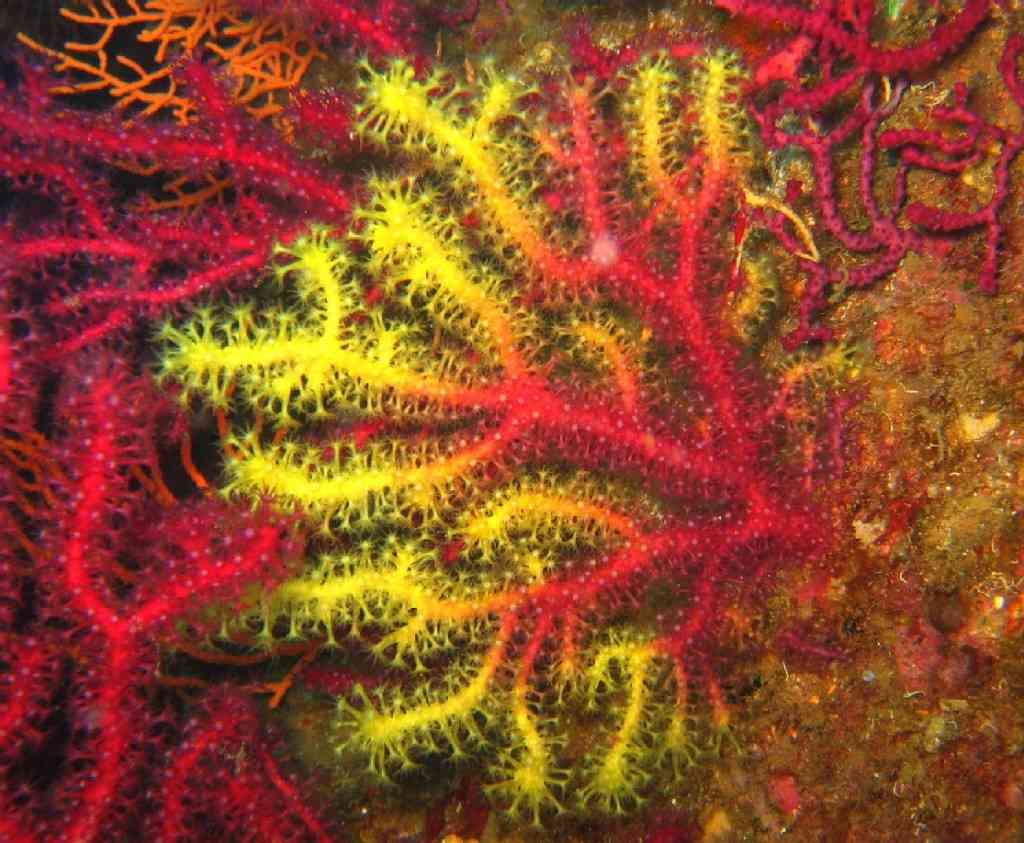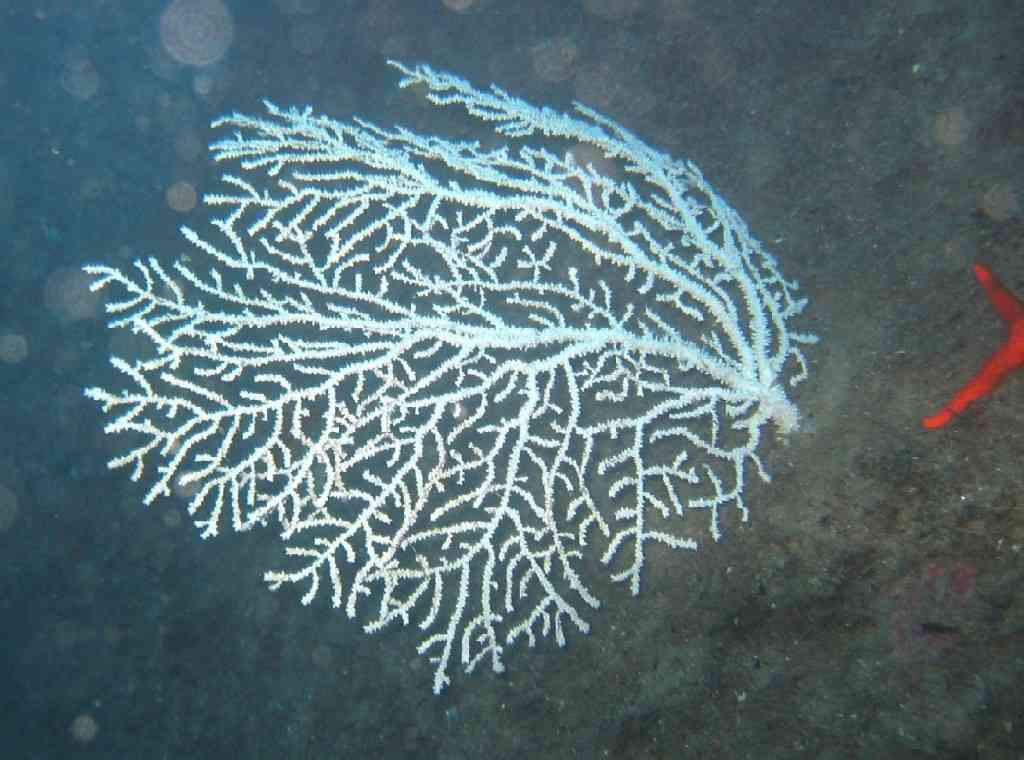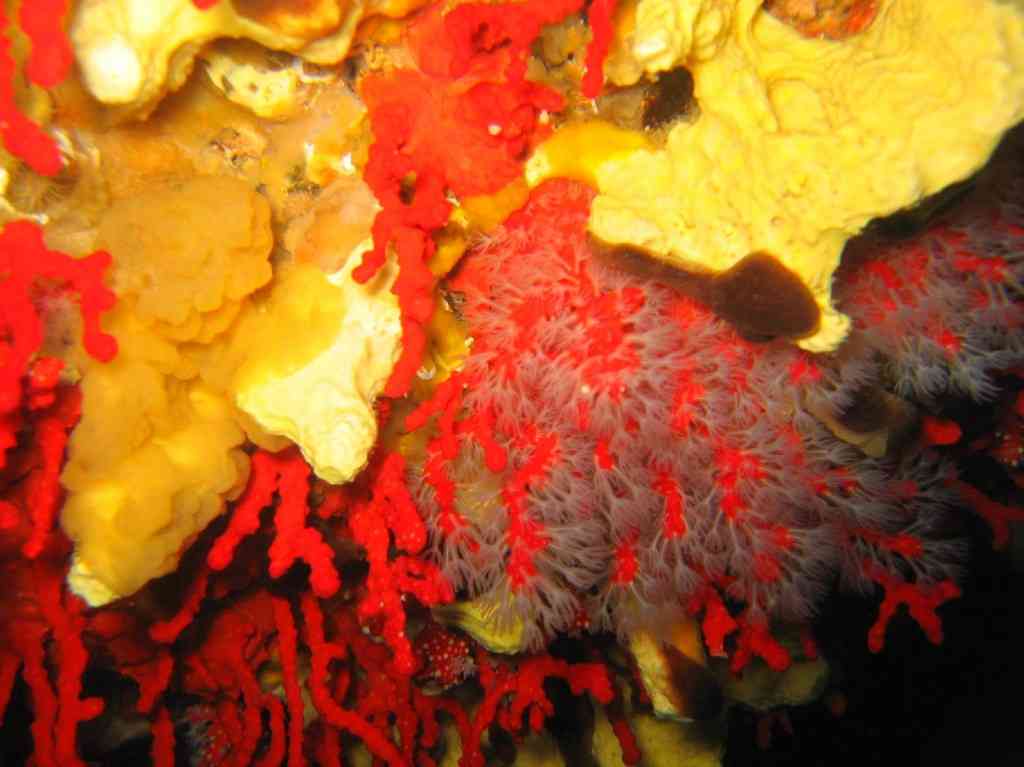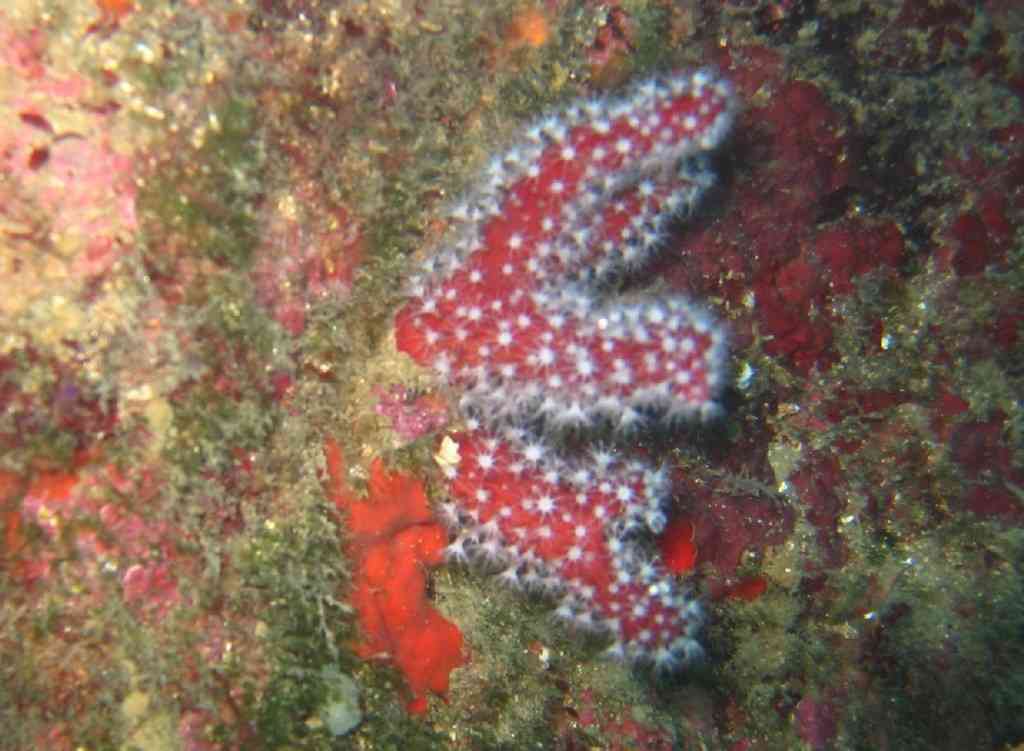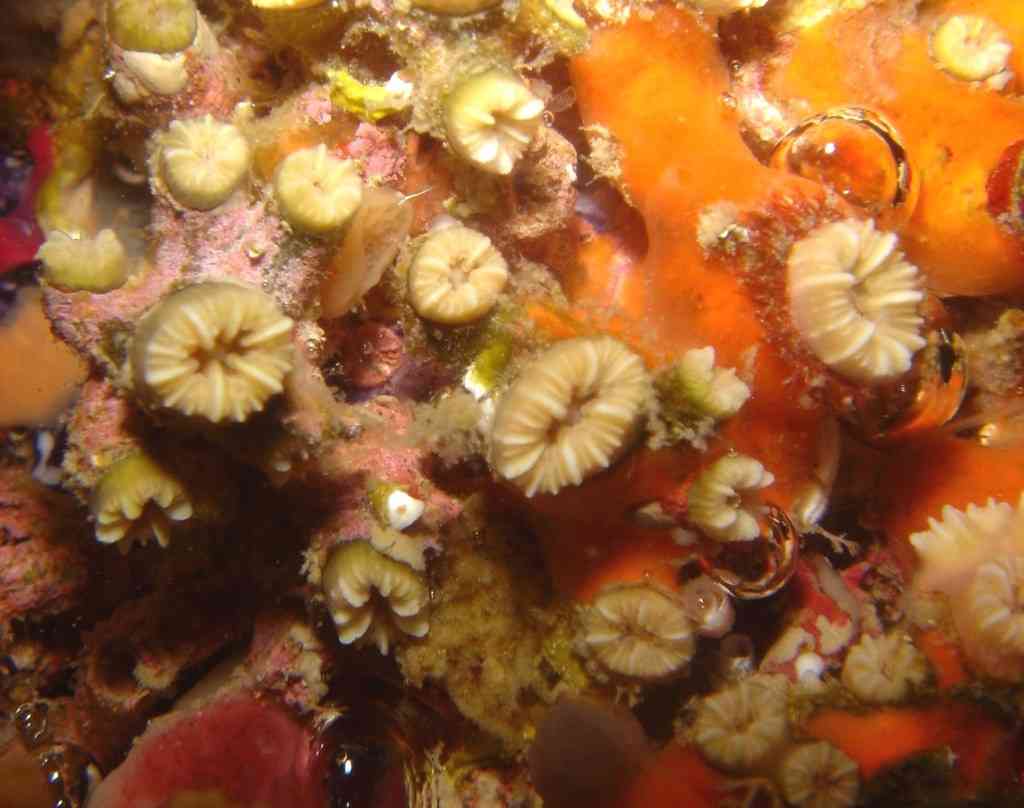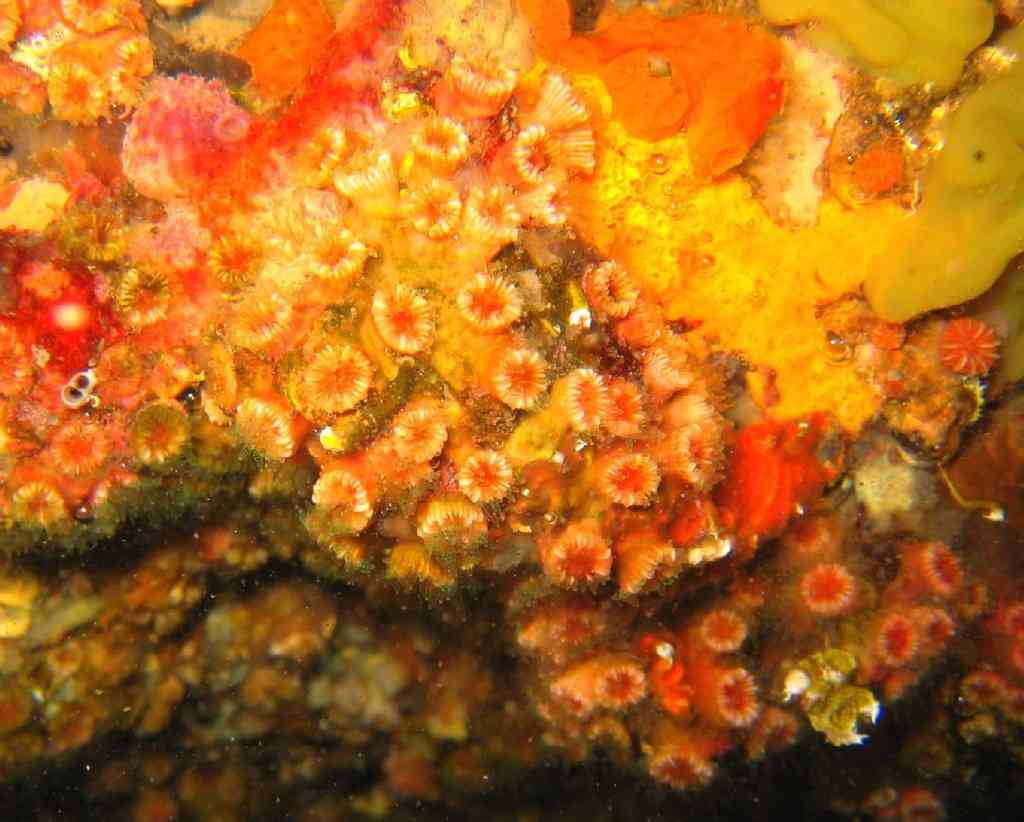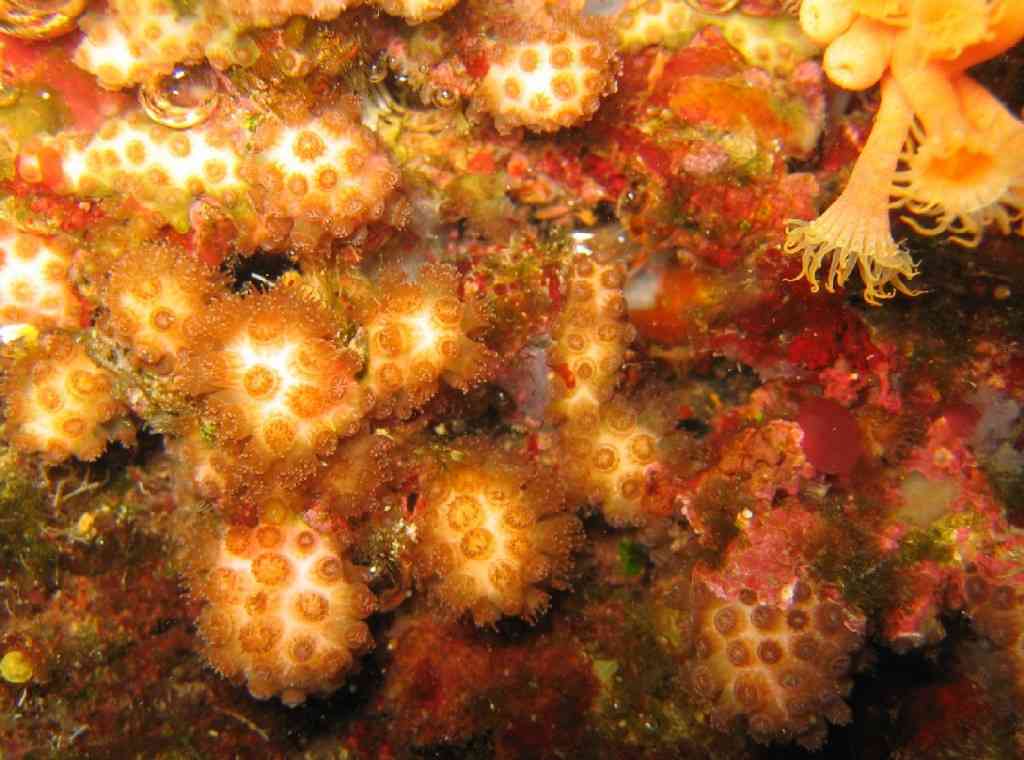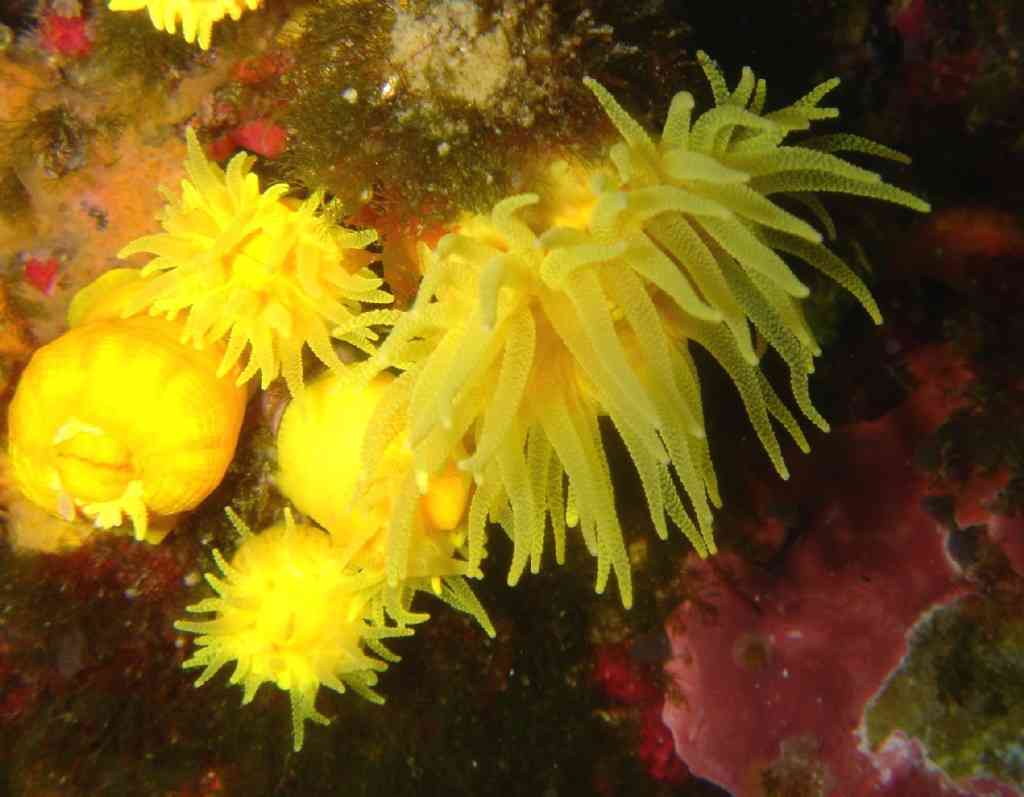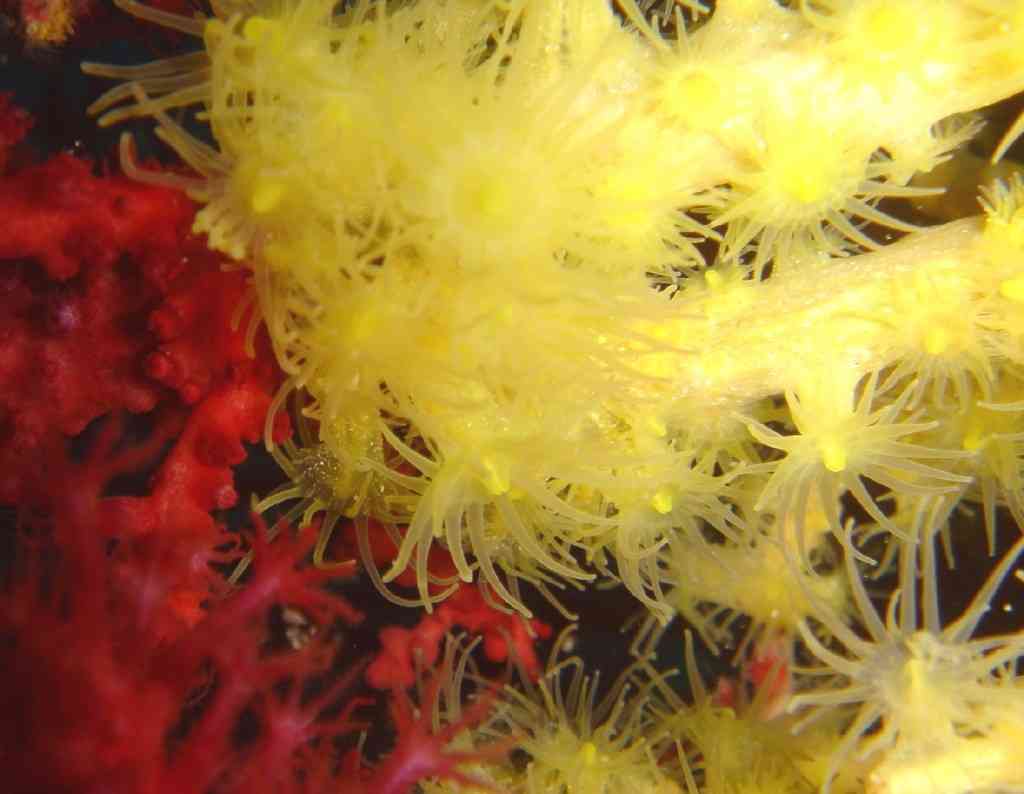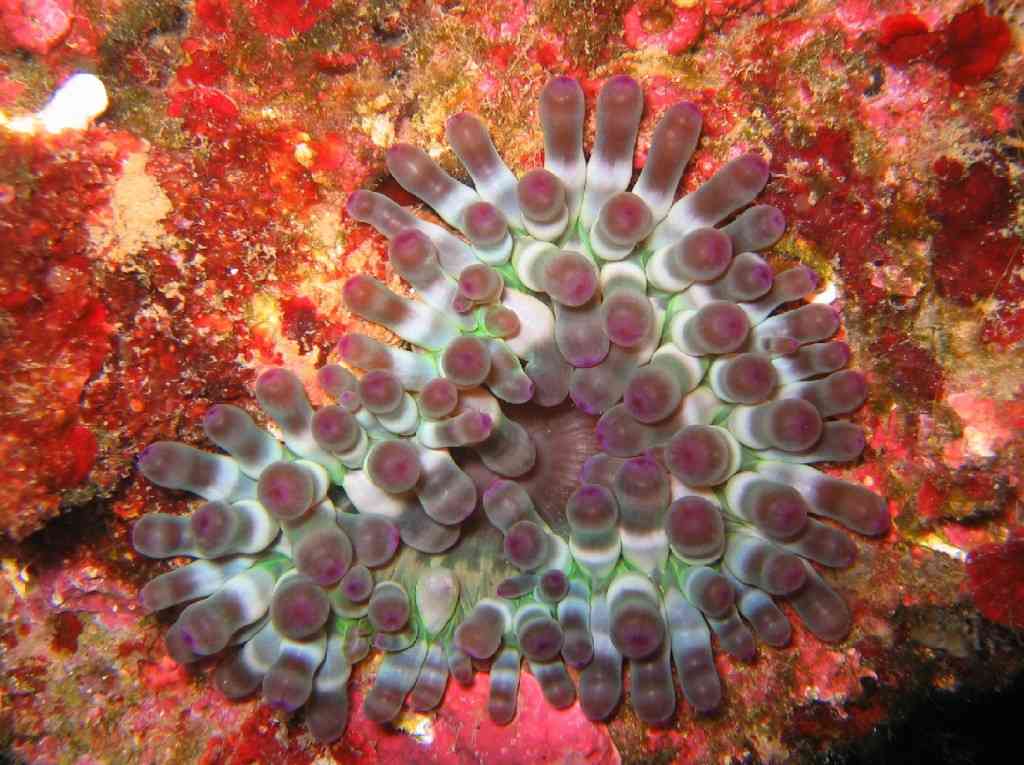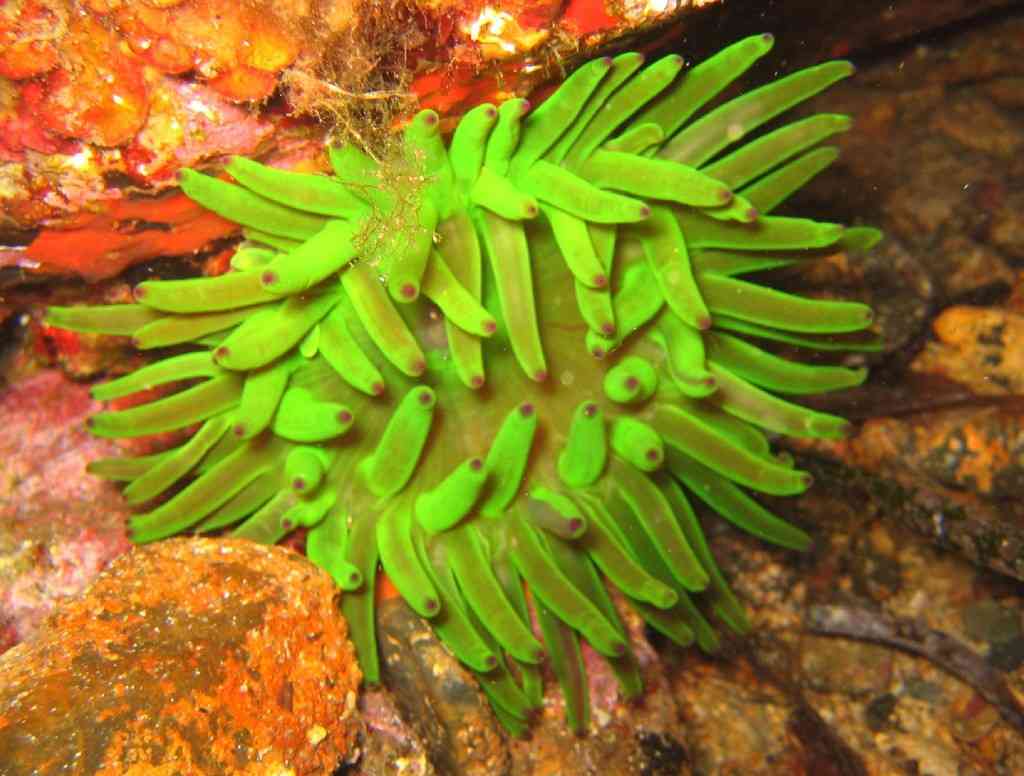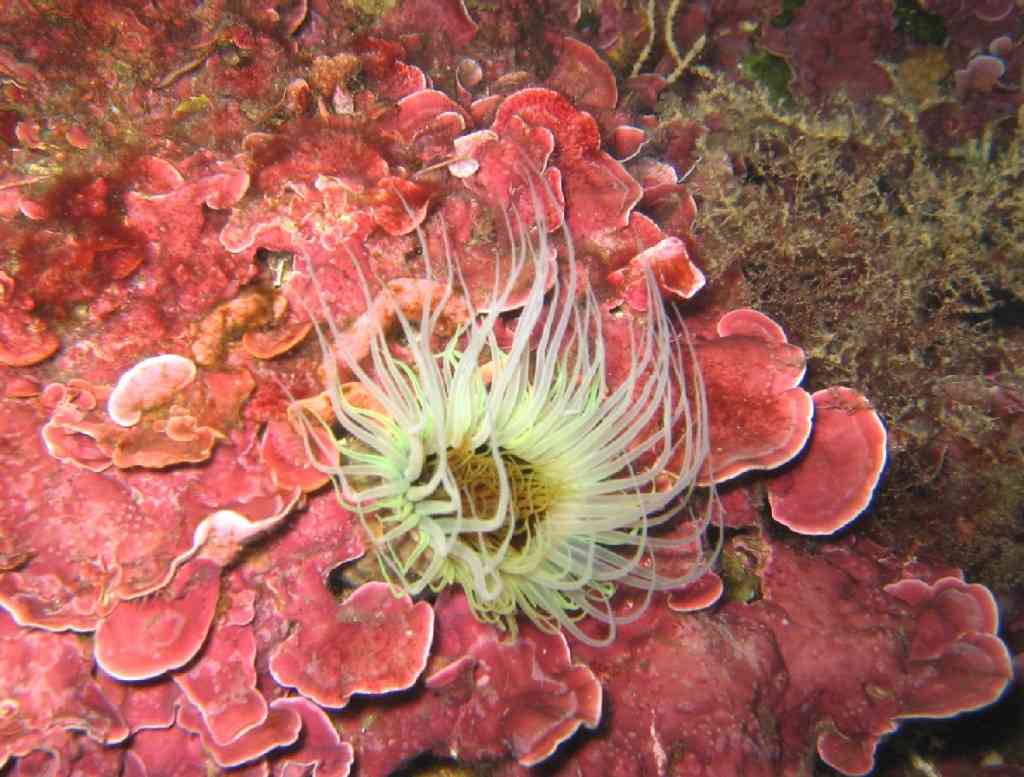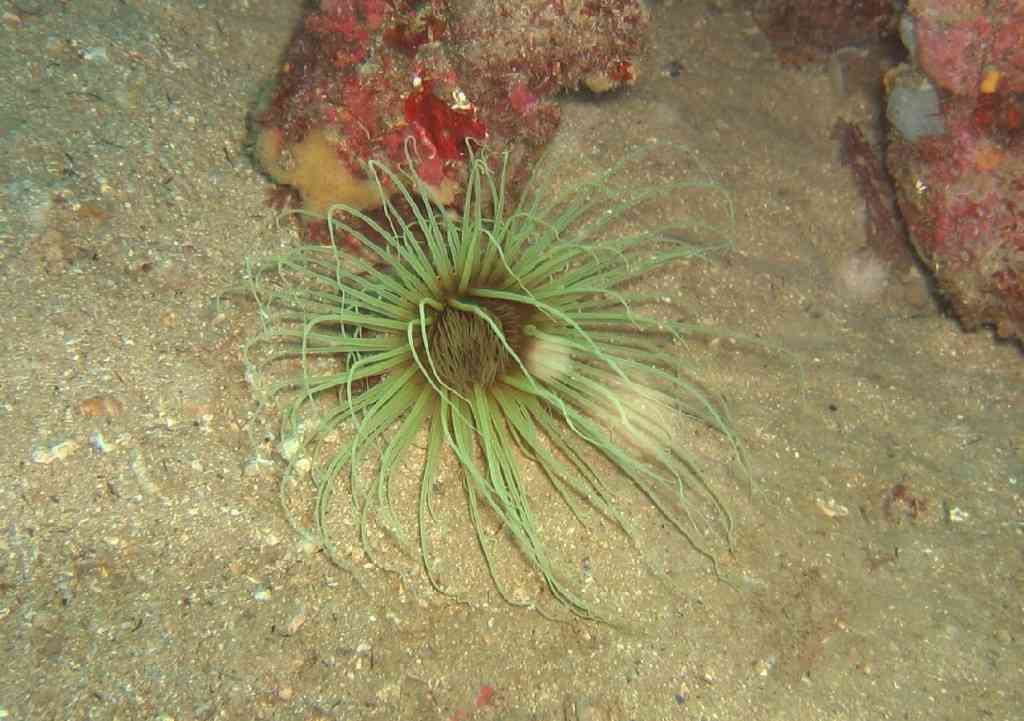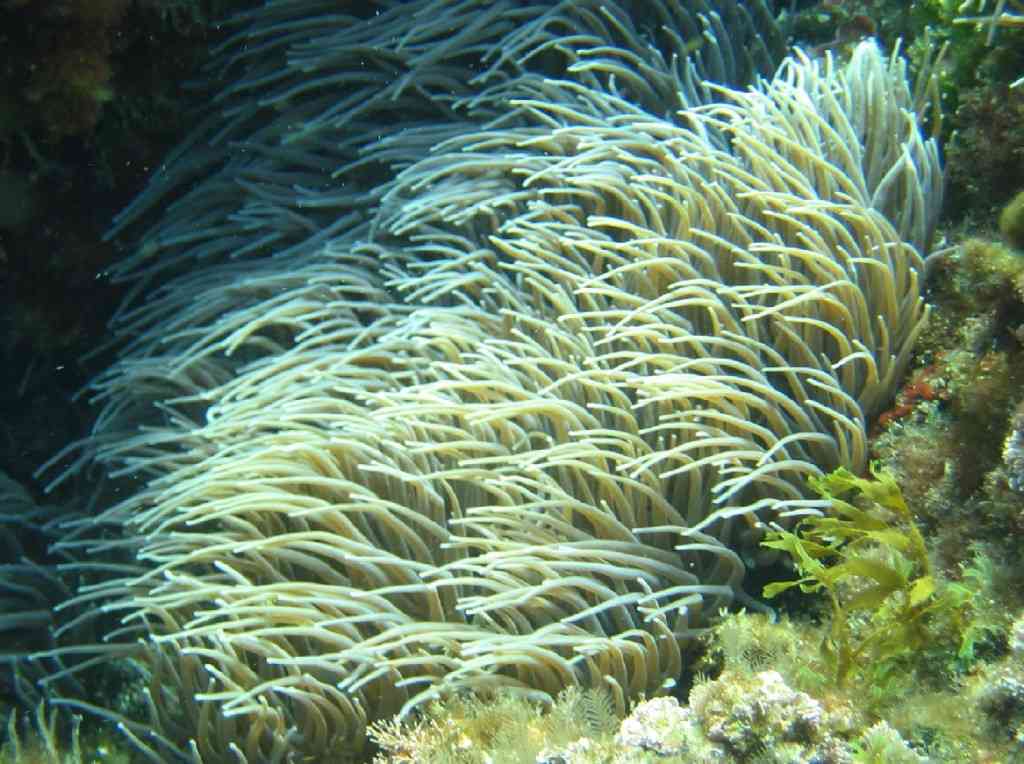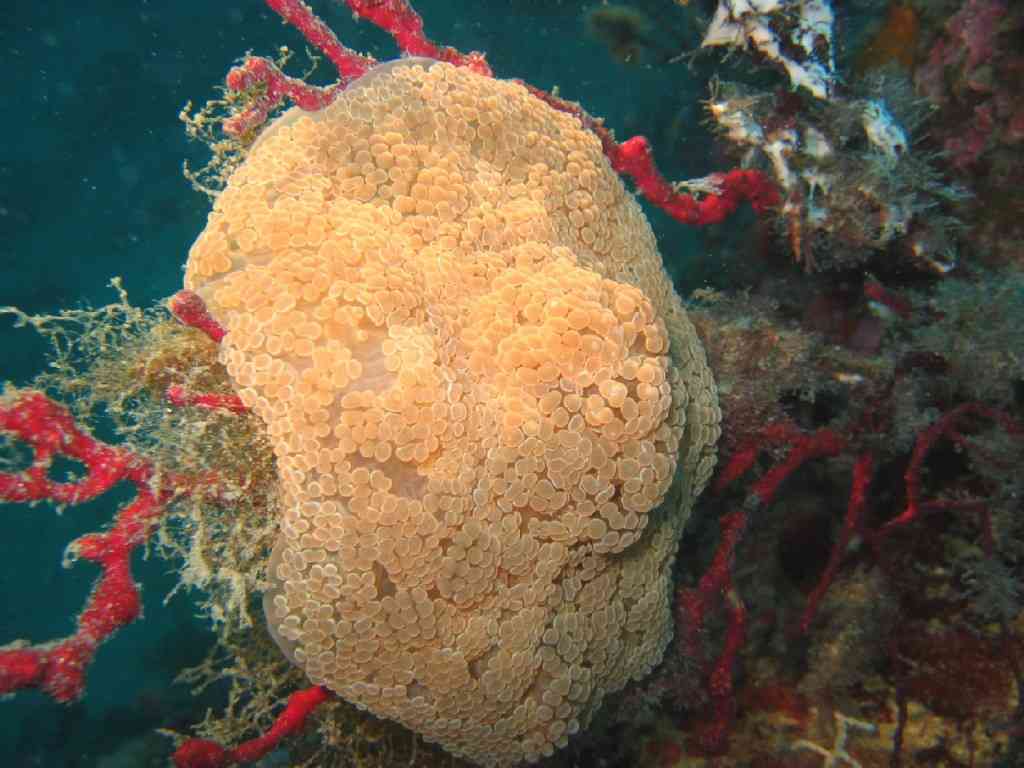The Cnidarians
Number : 9 000 species described, of which about 500 in the Mediterranean
and 20 species in fresh water.
Description:
The "Animals-flowers" of the Sea until 1841: the greatest diversity is observed in coral reefs. Solitary (anemones) or colonies (Madréporaires), free (Siphonophores) or fixed (Gorgonian), soft (jellyfish) or with external skeleton of a varied nature, sometimes very hard (coral reef builders), but always with a radial symmetry pair , the largest individuals (2 meters) are very small compared to the size of the Great Barrier Reef along the east coast of Australia (2 000 kms)!
A cnidarian is a bag opened by a mouth that also serves as an anus, it is surrounded by mobile tentacles sometimes very numerous but always stinging. Aristotle: Cnidus = who stings! That is the characteristic of the group.
In the cut, the Cnidarian envelope consists of three layers, two tissues having differentiated cells including cnidocysts: stinging cells and an intermediate layer, the Mesoglea that contains other cells, mobile (reproduction).
No circulatory, respiratory or excretory apparatus. Rudimentary nervous system.
Ecology :
It is one of the dominant rock-bottom groups with ascidians, sponges and bryozoans. Cnidarians can be dangerous for the diver, especially some famous jellyfish (Cubo-jellyfish in East Asia).
Fossil Madréporaires are at the origin of the concentration
In large quantities of hydrocarbons
(great interest in oil exploration).
Criteria of recognition :
The cnidarians are stinging! (Their contact is more or less unpleasant depending on the species and the location of the body of the diver affected: The palm of his hand is not sensitive because the skin is very thick, however, his lips have a thin skin and are very susceptible to involuntary contact with Fragments of tentacles adrift).
Trophic relations :
Cnidarian uses its many stinging tentacles to immobilize its live prey: planktonic organisms, copepods, small fish, shrimp, worms, brittlestars, etc.
It is important to note the exceptional symbiosis of corals and zooxanthellae, micro-algae.
The cnidarians are eaten by slugs, fish, turtles, etc.
Reproduction :
Sexual, formation of a ciliate larva that quickly attaches, gives a polyp that can lead to a jellyfish.
Pedagogical example of Aurélie (Scyphistoma fixed then Ephyrule libre).
Breeding by budding is the origin of large coral reefs in favorable areas of the inter-tropical belt.
Evolution :
The interesting Innovations brought by the cnidarians:
-Differentiation of cells to functional tissues (cnidocysts, muscles).
– Digestion.
– Locomotion in jellyfish.
These important steps justify placing the cnidarians
In the tree between the Porifera (sponges)
and Bryozoans (Sea roses).

